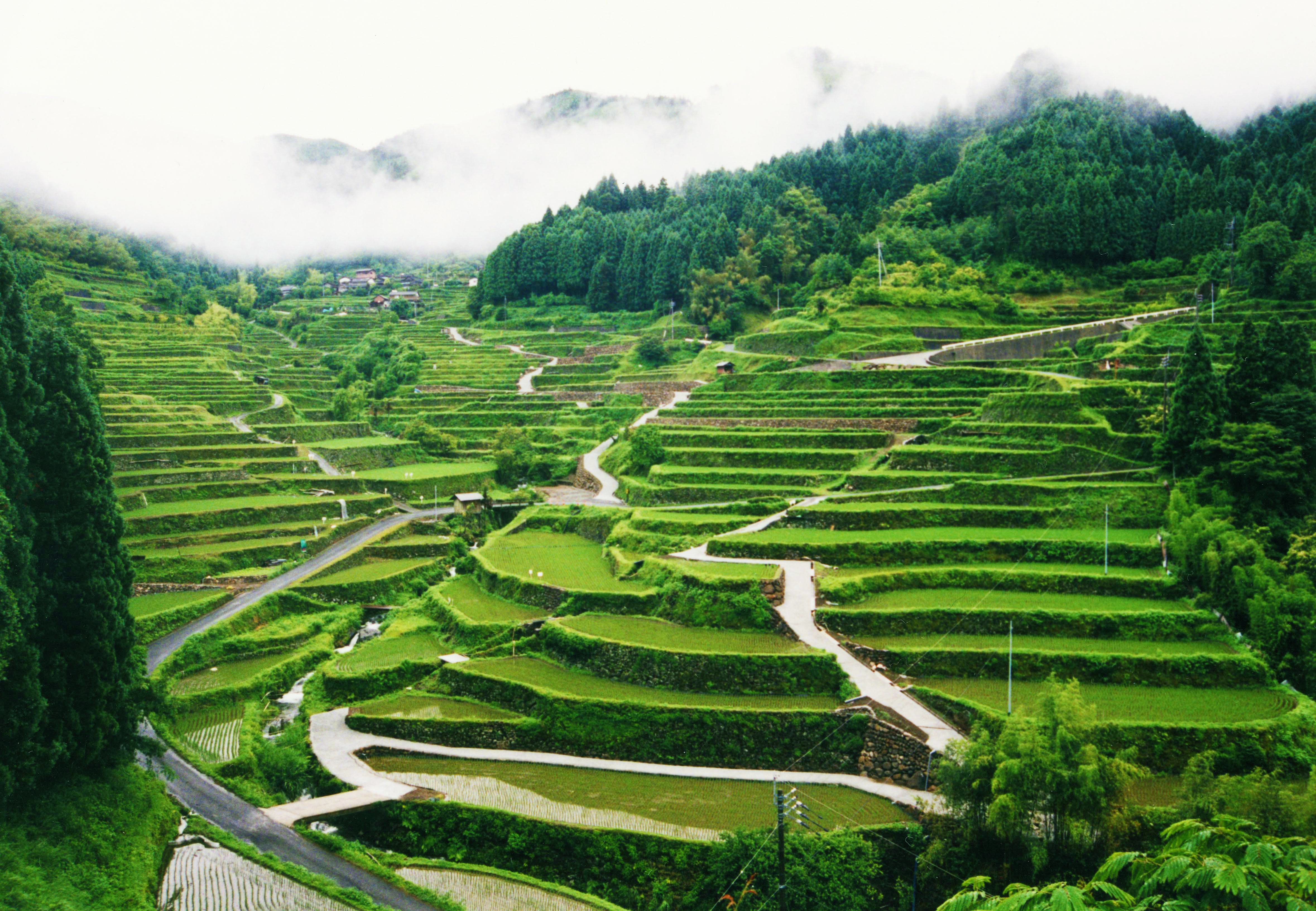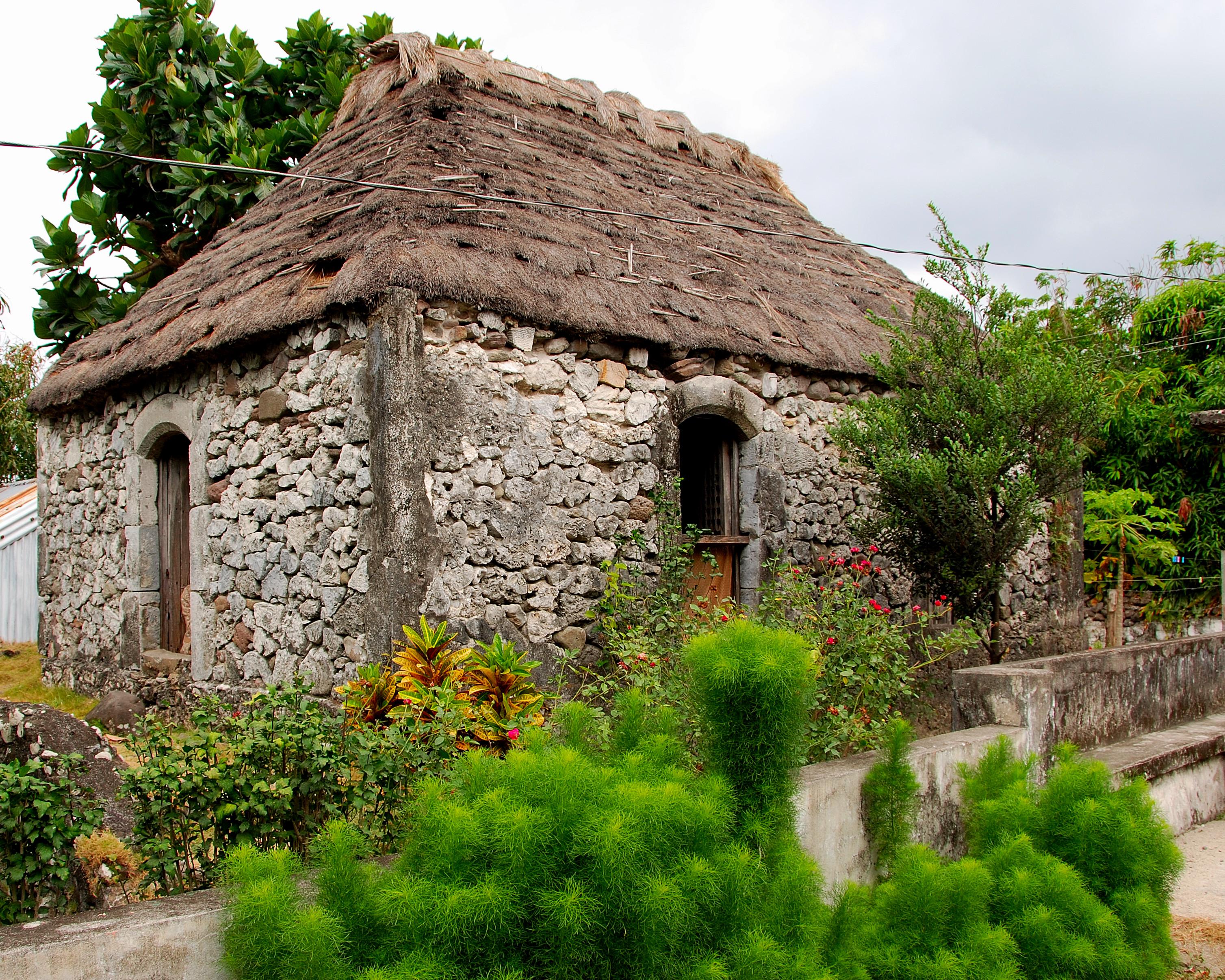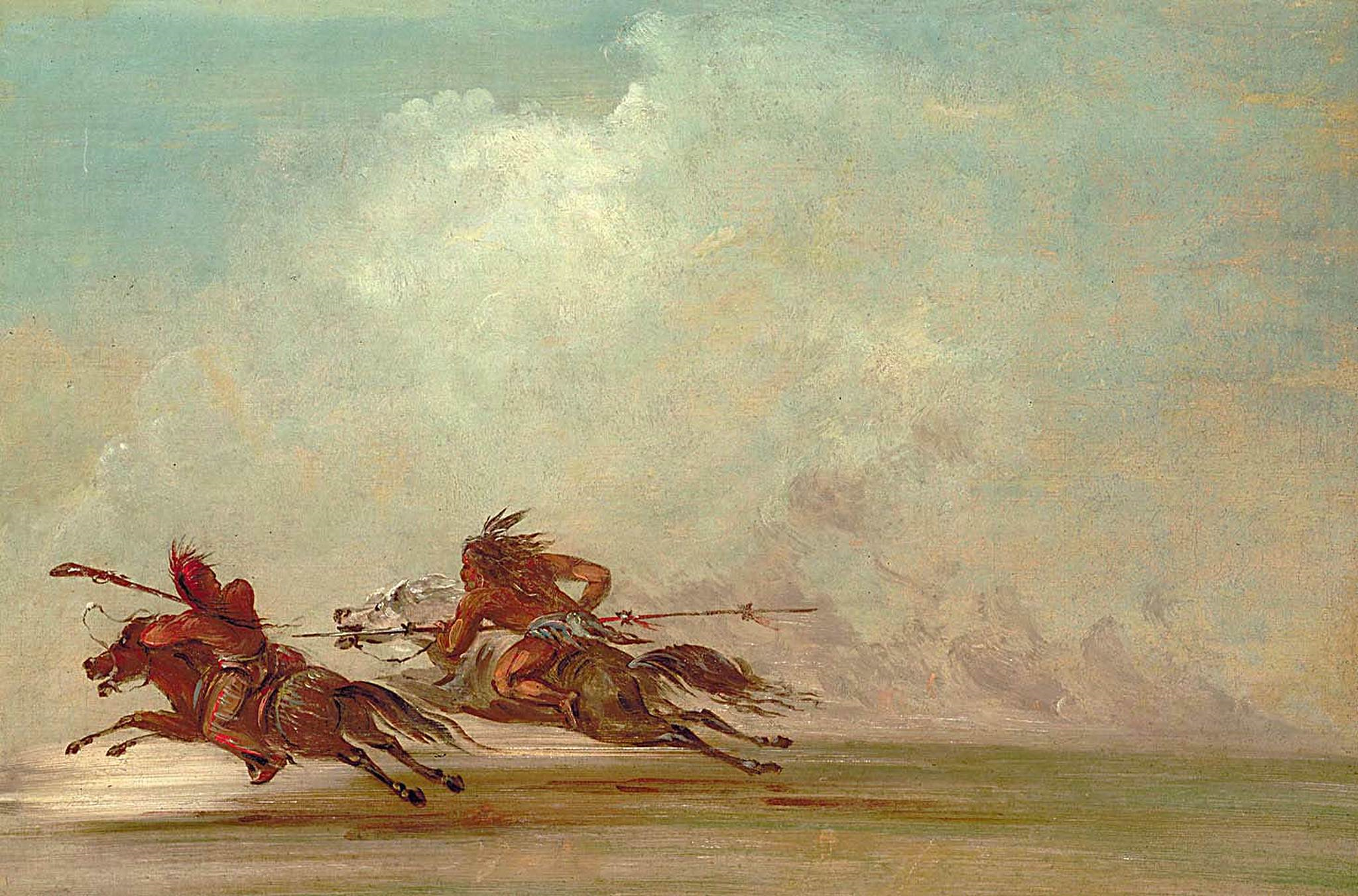|
Rice Terraces Of The Philippine Cordilleras
The Rice Terraces of the Philippine Cordilleras are a World Heritage Site consisting of a complex of Terrace (earthworks), rice terraces on the island of Luzon in the Philippines. They were inscribed on the World Heritage Site, UNESCO World Heritage List in 1995, the first-ever property to be included in the cultural landscape category of the World Heritage List. This inscription has five sites: Banaue Rice Terraces, the Batad Rice Terraces and Bangaan Rice Terraces (both in Banaue, Ifugao, Banaue), Mayoyao Rice Terraces (in Mayoyao, Ifugao, Mayoyao), Hungduan Rice Terraces (in Hungduan, Ifugao, Hungduan) and Nagacadan Rice Terraces (in Kiangan, Ifugao, Kiangan), all in Ifugao Province. The Ifugao Rice Terraces reach a higher altitude and were built on steeper slopes than many other terraces. The Ifugao complex of stone or mud walls and the careful carving of the natural contours of hills and mountains combine to make terraced pond fields, coupled with the development of ... [...More Info...] [...Related Items...] OR: [Wikipedia] [Google] [Baidu] |
Ifugao
Ifugao, officially the Province of Ifugao (; ), is a landlocked province of the Philippines in the Cordillera Administrative Region in Luzon. Its capital is Lagawe and it borders Benguet to the west, Mountain Province to the north, Isabela to the east, and Nueva Vizcaya to the south. The Rice Terraces of the Philippine Cordilleras and Banaue Rice Terraces are the main tourist attractions in the province. These terraces are believed to have been hand-carved into the mountains 2,000 years ago to plant rice. However, recent research by carbon dating suggests that they were built much later. In 1995, the Rice Terraces of the Philippine Cordilleras were declared as a UNESCO World Heritage Site. In 2008 and 2015, the ''Hudhud chants of the Ifugao'' and the '' Punnuk ( Tugging rituals and games)'' were inscribed in the UNESCO Intangible Cultural Heritage Lists. Etymology Ifugao is named after the term ''i-pugo'' (''"i"'' rom/peopleand ''pugo'' ill, which translates to ''pe ... [...More Info...] [...Related Items...] OR: [Wikipedia] [Google] [Baidu] |
Terrace (earthworks)
A terrace in agriculture is a flat surface that has been cut into hills or mountains to provide areas for the cultivation for crops, as a method of more effective farming. Terrace agriculture or cultivation is when these platforms are created successively down the terrain in a pattern that resembles the steps of a staircase. As a type of landscaping, it is called terracing. Terraced fields decrease both erosion and surface runoff, and may be used to support growing crops that require irrigation, such as rice. The Rice Terraces of the Philippine Cordilleras have been designated as a UNESCO World Heritage Site because of the significance of this technique. Uses Terraced paddy fields are used widely in rice, wheat and barley farming in east, south, southwest, and southeast Asia, as well as the Mediterranean Basin, Africa, and South America. Drier-climate terrace farming is common throughout the Mediterranean Basin, where they are used for vineyards, olive trees, cork oak, ... [...More Info...] [...Related Items...] OR: [Wikipedia] [Google] [Baidu] |
Hydraulic Engineering
Hydraulic engineering as a sub-discipline of civil engineering is concerned with the flow and conveyance of fluids, principally water and sewage. One feature of these systems is the extensive use of gravity as the motive force to cause the movement of the fluids. This area of civil engineering is intimately related to the design of bridges, dams, channels, canals, and levees, and to both sanitary and environmental engineering. Hydraulic engineering is the application of the principles of fluid mechanics to problems dealing with the collection, storage, control, transport, regulation, measurement, and use of water.Prasuhn, Alan L. ''Fundamentals of Hydraulic Engineering''. Holt, Rinehart, and Winston: New York, 1987. Before beginning a hydraulic engineering project, one must figure out how much water is involved. The hydraulic engineer is concerned with the transport of sediment by the river, the interaction of the water with its alluvial boundary, and the occurrence of scour a ... [...More Info...] [...Related Items...] OR: [Wikipedia] [Google] [Baidu] |
Taro
Taro (; ''Colocasia esculenta'') is a root vegetable. It is the most widely cultivated species of several plants in the family Araceae that are used as vegetables for their corms, leaves, stems and Petiole (botany), petioles. Taro corms are a food staple in Culture of Africa, African, Oceania, Oceanic, East Asian, Southeast Asian and South Asian cultures (similar to Yam (vegetable), yams). Taro is believed to be one of the earliest cultivated plants. Common names The English term '':wikt:taro#English, taro'' was :wikt:taro#Maori, borrowed from the Māori language when James Cook, Captain Cook first observed ''Colocasia'' plantations in New Zealand in 1769. The form ''taro'' or ''talo'' is widespread among Polynesian languages:*''talo'': taro (''Colocasia esculenta'') – entry in the ''Polynesian Lexicon Project ... [...More Info...] [...Related Items...] OR: [Wikipedia] [Google] [Baidu] |
Thailand
Thailand, officially the Kingdom of Thailand and historically known as Siam (the official name until 1939), is a country in Southeast Asia on the Mainland Southeast Asia, Indochinese Peninsula. With a population of almost 66 million, it spans . Thailand Template:Borders of Thailand, is bordered to the northwest by Myanmar, to the northeast and east by Laos, to the southeast by Cambodia, to the south by the Gulf of Thailand and Malaysia, and to the southwest by the Andaman Sea; it also shares maritime borders with Vietnam to the southeast and Indonesia and India to the southwest. Bangkok is the state capital and List of municipalities in Thailand#Largest cities by urban population, largest city. Tai peoples, Thai peoples migrated from southwestern China to mainland Southeast Asia from the 6th to 11th centuries. Greater India, Indianised kingdoms such as the Mon kingdoms, Mon, Khmer Empire, and Monarchies of Malaysia, Malay states ruled the region, competing with Thai states s ... [...More Info...] [...Related Items...] OR: [Wikipedia] [Google] [Baidu] |
Indonesia
Indonesia, officially the Republic of Indonesia, is a country in Southeast Asia and Oceania, between the Indian Ocean, Indian and Pacific Ocean, Pacific oceans. Comprising over List of islands of Indonesia, 17,000 islands, including Sumatra, Java, Sulawesi, and parts of Borneo and New Guinea, Indonesia is the world's largest archipelagic state and the List of countries and dependencies by area, 14th-largest country by area, at . With over 280 million people, Indonesia is the world's List of countries and dependencies by population, fourth-most-populous country and the most populous Islam by country, Muslim-majority country. Java, the world's List of islands by population, most populous island, is home to more than half of the country's population. Indonesia operates as a Presidential system, presidential republic with an elected People's Consultative Assembly, legislature and consists of Provinces of Indonesia, 38 provinces, nine of which have Autonomous administrative divisi ... [...More Info...] [...Related Items...] OR: [Wikipedia] [Google] [Baidu] |
Cambodia
Cambodia, officially the Kingdom of Cambodia, is a country in Southeast Asia on the Mainland Southeast Asia, Indochinese Peninsula. It is bordered by Thailand to the northwest, Laos to the north, and Vietnam to the east, and has a coastline along the Gulf of Thailand in the southwest. It spans an area of , dominated by a low-lying plain and the confluence of the Mekong river and Tonlé Sap, Southeast Asia's largest lake. It is dominated by a tropical climate and is rich in biodiversity. Cambodia has a population of about 17 million people, the majority of which are ethnically Khmer people, Khmer. Its capital and most populous city is Phnom Penh, followed by Siem Reap and Battambang. In 802 AD, Jayavarman II declared himself king, uniting the warring Khmer princes of Chenla Kingdom, Chenla under the name "Kambuja".Chandler, David P. (1992) ''History of Cambodia''. Boulder, CO: Westview Press, . This marked the beginning of the Khmer Empire. The Indianised kingdom facilitated ... [...More Info...] [...Related Items...] OR: [Wikipedia] [Google] [Baidu] |
Batanes
Batanes, officially the Province of Batanes (; Ilocano: ''Probinsia ti Batanes''; , ), is an archipelagic province in the Philippines, administratively part of the Cagayan Valley region. It is the northernmost province in the Philippines, and the smallest, both in population and land area. The capital is Basco, located on the island of Batan, and is also the most populous municipality in the province. The island group is located approximately north of the Luzon mainland and about south of Taiwan ( Pingtung County). Batanes is separated from the Babuyan Islands of Cagayan Province by the Balintang Channel, and from Taiwan by the Bashi Channel. Etymology The name ''Batanes'' is a Hispanicized plural form derived from the Ivatan endonym ''Batan''. History Early history The ancestors of today's Ivatans descended from Austronesians who migrated to the islands 4,000 years ago during the Neolithic period. They lived in fortified mountain areas called '' idjangs'' and ... [...More Info...] [...Related Items...] OR: [Wikipedia] [Google] [Baidu] |
Ivatan People
The Ivatan people are an Austronesian ethnolinguistic group native to the Batanes and Babuyan Islands of the northernmost Philippines. They are genetically closely related to other ethnic groups in Northern Luzon, but also share close linguistic and cultural affinities with the Tao people of Orchid Island in Taiwan. The culture of the Ivatans is partly influenced by the environmental conditions of Batanes. Unlike the old-type nipa huts common in the Philippines, Ivatans have adopted their now-famous stone houses made of coral and limestone, designed to protect against the hostile climate. Origins A 2011 genetic study has concluded that it is likely that the Batanes Islands were initially only used as "stepping stones" during the early stages of the maritime Austronesian expansion from Taiwan into the Philippine Islands (c. 3000 BCE). It was later re-colonized by Austronesians from northern Luzon at around 1200 BCE, which became the ancestors of the Ivatan people. Archaeol ... [...More Info...] [...Related Items...] OR: [Wikipedia] [Google] [Baidu] |
Idjang
Ijangs are the terraced hillfort settlements of the Ivatan people built on hill tops and ridges in the Batanes Islands of the Philippines. These high rocky formations can serve as fortresses or refuge against the enemies of the Ivatan people. Background In 1994, Eusebio Dizon, the deputy director of the National Museum of the Philippines, went to Batanes with his team for an archeological project. They found a triangular-shaped hill in Savidug, a town in Sabtang. These structures were called ''ijang''. Ijangs are similar to the ''gusuku'' castles found in Okinawa, Japan. Aside from both of them being strategically built in high places, 12th-century Sung-type ceramics and Chinese beads and other artefactual materials recovered from an ijang were dated at almost the same time as the foundations of the Okinawan castles beginning from circa 1200 CE. The Ivatan traditionally lived in the ''ijang'' which were fortified mountain areas and drank sugar-cane wine, or ''palek''. They also ... [...More Info...] [...Related Items...] OR: [Wikipedia] [Google] [Baidu] |
Tribal Culture
The term tribe is used in many different contexts to refer to a category of human social group. The predominant worldwide use of the term in English is in the discipline of anthropology. The definition is contested, in part due to conflicting theoretical understandings of social and kinship structures, and also reflecting the problematic application of this concept to extremely diverse human societies. Its concept is often contrasted by anthropologists with other social and kinship groups, being hierarchically larger than a lineage or clan, but smaller than a chiefdom, ethnicity, nation or state. These terms are similarly disputed. In some cases tribes have legal recognition and some degree of political autonomy from national or federal government, but this legalistic usage of the term may conflict with anthropological definitions. In the United States (US), Native American tribes are legally considered to have "domestic dependent nation" status within the territorial U ... [...More Info...] [...Related Items...] OR: [Wikipedia] [Google] [Baidu] |
Rice Terrace
A terrace in agriculture is a flat surface that has been cut into hills or mountains to provide areas for the cultivation for crops, as a method of more effective farming. Terrace agriculture or cultivation is when these platforms are created successively down the terrain in a pattern that resembles the steps of a staircase. As a type of landscaping, it is called terracing. Terraced fields decrease both erosion and surface runoff, and may be used to support growing crops that require irrigation, such as rice. The Rice Terraces of the Philippine Cordilleras have been designated as a UNESCO World Heritage Site because of the significance of this technique. Uses Terraced paddy fields are used widely in rice, wheat and barley farming in east, south, southwest, and southeast Asia, as well as the Mediterranean Basin, Africa, and South America. Drier-climate terrace farming is common throughout the Mediterranean Basin, where they are used for vineyards, olive trees, cork oak, ... [...More Info...] [...Related Items...] OR: [Wikipedia] [Google] [Baidu] |








